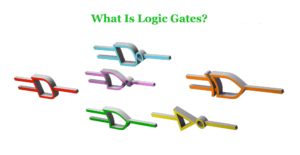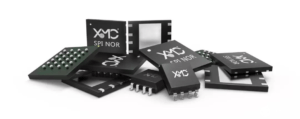If you’re in the electronics industry, you’ve likely heard of FPC coverlay. But do you know all the benefits and applications of this essential material? FPC coverlay is a thin, flexible material that is applied to a flexible printed circuit board (FPCB) to protect the copper traces from external elements. In this ultimate guide, we’ll take a deep dive into everything you need to know about FPC coverlay. From its benefits, to its applications, to the best practices for using it, we’ve got you covered.
What is FPC Coverlay made of?
FPC coverlay is a thin, flexible material that is made from a variety of materials, including polyimide, polyester, and fluoropolymer materials. The most commonly used material for FPC coverlay is polyimide, due to its excellent thermal stability, chemical resistance, and mechanical properties. Polyimide films are also highly flexible, making them ideal for use in FPCBs, which require a high degree of flexibility.
FPC coverlay films are typically coated with a layer of adhesive on one side, which is used to bond the coverlay to the FPCB. The adhesive can be either a solvent-based or a solventless adhesive, depending on the specific application requirements. Solvent-based adhesives are typically more cost-effective, but they require a longer curing time and can emit volatile organic compounds (VOCs) during the curing process. Solventless adhesives, on the other hand, cure more quickly and do not emit VOCs, but they are generally more expensive.
FPC coverlays can also be laminated with other materials, such as copper foil or adhesive-backed films, to create a variety of different structures for specific applications.
Benefits of using Coverlay on Your Flex PCB
The coverlay offers a variety of benefits for electronics manufacturers, including:
Protection of Copper Traces
One of the primary benefits of FPC coverlay is its ability to protect the copper traces on a FPCB from external elements. Without a coverlay, the copper traces can become damaged by exposure to moisture, dust, and other contaminants, which can cause electrical shorts or open circuits. FPC coverlay provides a barrier between the copper traces and these external elements, ensuring that the FPCB remains reliable and functional over its lifetime.
Flexibility
Coverlay is highly flexible, which makes it ideal for use in FPCBs. Unlike rigid PCBs, which can only be used in applications where there is little or no movement, FPCBs can be flexed or bent without breaking. This flexibility makes FPCBs ideal for use in applications where space is limited or where the PCB needs to conform to a non-flat surface.
Chemical Resistance
FPC coverlay is highly resistant to a variety of chemicals, including solvents, acids, and bases. This makes it ideal for use in applications where the PCB is exposed to harsh chemicals, such as in the automotive or aerospace industries.
Thermal Stability
FPC coverlay is highly resistant to heat, making it ideal for use in high-temperature applications. Polyimide films, in particular, have excellent thermal stability and can withstand temperatures up to 400°C without degrading.
How to select the right Coverlay for your project?
When selecting the correct coverlay for your flex PCB, there are several important factors that should be taken into consideration:
Flexibility Requirements:
The coverlay material should be flexible enough to allow the PCB to bend without cracking or breaking. Thinner coverlay is generally more flexible than thicker coverlay, so it may be a better choice for flex PCBs that require tight bend radius.
Adhesive Thickness:
The adhesive layer is an important component of the coverlay that provides adhesion between the coverlay and the PCB substrate. The thickness of the adhesive layer should be sufficient to fully encapsulate the traces and prevent exposure to the environment. Typically, a minimum of 25 μm (1 mil) of adhesive is recommended per ounce of copper weight.
Thermal Resistance:
The coverlay should be able to withstand the temperature extremes that the PCB may encounter during operation or assembly. The temperature resistance of the coverlay is typically measured in terms of the glass transition temperature (Tg) or the decomposition temperature (Td).
Cost
For high-volume production, thicker or specialty coverlay materials may be more expensive than standard materials.
FPC Coverlay vs. other alternatives
FPC coverlay is not the only material that can be used to protect the copper traces on a flexible PCB. Other alternatives include:
Solder Mask
Solder mask is a liquid material that is applied to the copper traces on a PCB to protect them from external elements. While solder mask is less expensive than FPC coverlay, it is not as flexible and does not offer the same level of protection from environmental factors.
Flexible Solder Resist
Flexible solder resist is a material that is similar to FPC coverlay in that it is a thin, flexible material that is applied to the copper traces on a flexible PCB to protect them from external elements. While flexible solder resist is more flexible than solder mask, it is not as flexible as FPC coverlay and does not offer the same level of protection from environmental factors.
Challenges with FPC Coverlay
While FPC coverlay offers many benefits, there are also some challenges that must be overcome to ensure its optimal performance and reliability. These challenges include:
Adhesive Bonding
One of the primary challenges with FPC coverlay is achieving a strong and reliable bond between the coverlay and the PCB. This can be particularly challenging with flexible substrates, which can deform during the bonding process. To overcome this challenge, it is important to use an adhesive that is specifically designed for bonding FPC coverlay to flexible substrates and to carefully control the bonding process.
Thermal Expansion
FPC coverlay can experience significant thermal expansion and contraction during use, which can cause delamination or cracking of the coverlay. To overcome this challenge, it is important to select a coverlay material that has a similar coefficient of thermal expansion as the substrate and to carefully control the curing process to ensure that the adhesive is fully cured and that there are no air pockets or other defects in the coverlay.
Durability
FPC coverlay must be able to withstand a variety of environmental conditions, including temperature extremes, exposure to moisture and chemicals, and mechanical stress. To ensure durability, it is important to select a coverlay material that is appropriate for the specific application and to carefully control the manufacturing process to ensure that the coverlay is free from defects.






